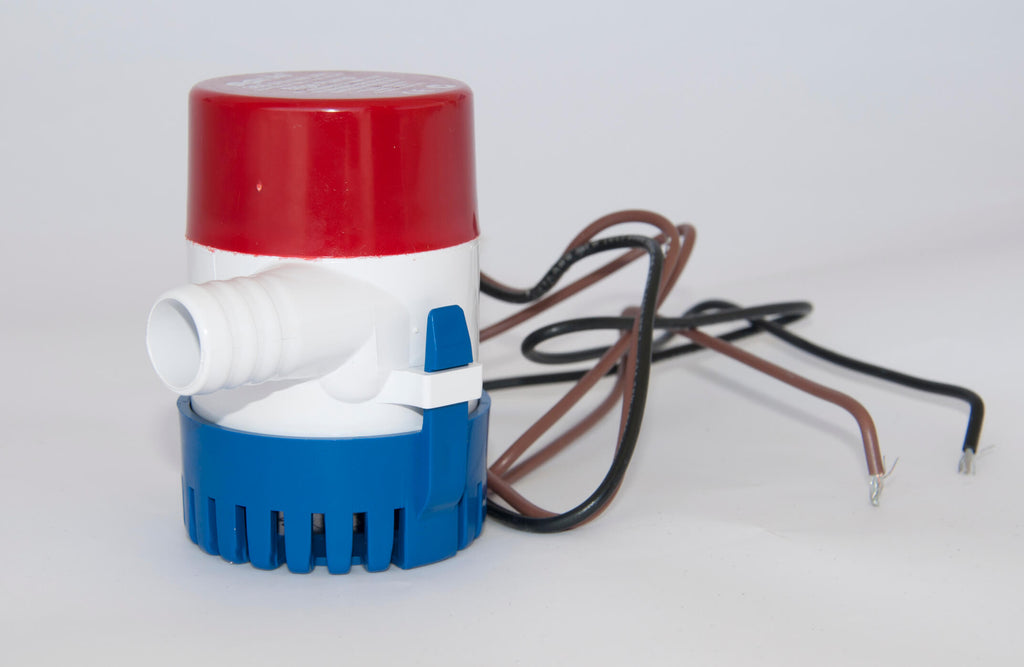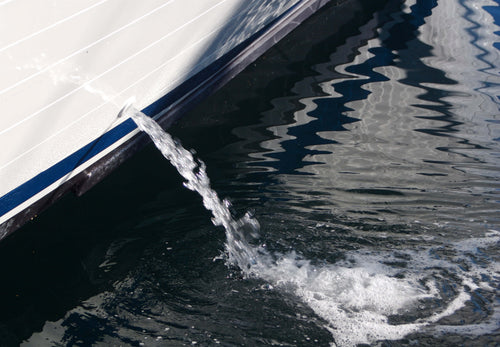Bilge pumps are an essential safety and maintenance feature of any boat. They prevent flooding and protect vessels from becoming too heavy due to fluid buildup. The quality of a bilge pump can mean the difference between staying afloat and sinking, so incorporating the correct pump is crucial. There are numerous types, sizes, and configurations of bilge pumps to choose from, which can be overwhelming to new boat owners. Bilge pump buyers should be wary of the benefits and disadvantages of each pump type before installing one into their vessel. Below, you can find information about the types of bilge pumps, the boats each type is used for, and how to size a bilge pump for your boat.
What is the best bilge pump?
While centrifugal bilge pumps are the most popular type of bilge pump, there is no “one size fits all” solution to finding a pump for your boat. The best bilge pump for your vessel depends on the size of the boat and the type and amount of debris your boat will face. Large boats, for example, must use centrifugal pumps because of their high output rates. They often use other pump types in conjunction with centrifugal pumps to rid the hull of sludge and other thick fluids. Owners of smaller boats, on the other hand, can choose between centrifugal and the other pump types. Distinguishing between the types of bilge pumps is the first step toward purchasing the correct one for your vessel.
How many bilge pumps should a boat have?
Small boats, such as deck boats, small fishing boats, and center console boats, should only need one bilge pump to remove unwanted water, but larger vessels should utilize two or more pumps to manage the water levels. Even for small boats, however, a secondary bilge pump may be preferred as a backup to the primary pump. If excessive amounts of water pour into the bilge, multiple bilge pumps can help save the day. Many boat enthusiasts prefer to install one medium-capacity pump under the bilge with a second high-capacity pump mounted above the bilge.
The best way to avoid a flooded bilge is to invest in a thorough bilge pump system. The time to prepare for a full bilge is not when the bilge fills up, but rather when you prepare your boat for the water. Multiple bilge pumps may seem like unnecessary costs, but they can help you save money and protect you when trouble arises.
Automatic vs manual bilge pumps
The primary difference between automatic and manual bilge pumps is how they are activated. While most bilge pumps are automated, some can be turned on manually. Manual bilge pumps are commonly used on small recreational boats, such as dinghies, kayaks, and canoes. These pumps allow water to be pumped out at the user’s discretion and are only advisable for small vessels. Some manual diaphragm pumps allow for higher volumes of water, so they may be used on small boats that are slightly larger than canoes and kayaks.

Automatic bilge pumps operate with a float switch, a device that signals the pump when water reaches a preset level. These pumps ensure that water does not fill up past a certain point by powering the pump on when water reaches the predetermined height. Likewise, the switch protects the pump from constantly running by shutting it off when the water dips below a separate preset level. This factor is especially important for pumps that overheat quickly while running dry.
What type of bilge pump do I need?
Bilge pumps come in three major types, centrifugal, diaphragm, and reciprocating. Each type possesses unique characteristics that benefit or hinder its performance compared to other types. Compare your needs to the specifications of each type to find your desired pump type.
Centrifugal bilge pumps
Centrifugal pumps are the most popular type of bilge pump due to their low cost and ability to pump large volumes of water. They use an impeller with blades to increase the speed and pressure of incoming water. Large vessels almost exclusively use centrifugal pumps to offset the large volumes of water they intake. These pumps are also advantageous because of their ability to handle small debris.
Despite their popularity, centrifugal bilge pumps possess some negative attributes that are not ideal for small and medium boats. For example, they cannot pump water well uphill, and most are not self-priming. This prevents all water from a bilge from being pumped out. As a result, another type of pump must be used to rid the bilge of all water. Some self-priming centrifugal pumps exist, but they are mostly designed for large vessels and come at a premium cost. Centrifugal pumps that are not self-priming should never be run dry. Doing so will cause the pump to overheat and cause irreversible damage to the impeller.
Ideal for:
- Large ships
- Use with reciprocating pumps
Diaphragm bilge pumps
Diaphragm bilge pumps are not ideal for large ships because they do not tolerate the same flow capacities as centrifugal pumps. They also struggle to handle debris, so a screen or filter must be installed next to the pump’s intake to prevent damage. Diaphragm bilge pumps are positive displacement pumps, meaning they are much better at pumping water uphill than centrifugal pumps. They also do not need to be submerged to function, so they can be installed above the bilge, allowing easy access for maintenance and upkeep.
Another positive of diaphragm pumps is that some do not require electrical power. These pumps are powered by manually turning a lever or crank when the user decides to rid the bilge of water. Manual pumps eliminate the risk of pump failure due to electrical issues, but they are only advisable in very small boats, such as dinghies.
Ideal for:
- Small to medium-sized ships
- Boats where manual pumps are an option
Reciprocating bilge pumps
Reciprocating bilge pumps, also known as piston bilge pumps, are similar to diaphragm pumps because they use positive displacement to remove water from the hull. They are also self-priming and can be mounted away from the bilge like diaphragm pumps. The major benefit of piston pumps is their ability to pump more viscous liquids than either centrifugal or diaphragm can. Because of this ability, reciprocating pumps are often used in conjunction with centrifugal pumps in large vessels. The centrifugal pumps handle the large volumes of water the boat intakes, and the piston pumps deal with sludge that builds up over time.
The downsides of piston bilge pumps are similar to those of diaphragm pumps. Centrifugal pumps can remove much larger volumes of water than piston pumps, even the most powerful models. Reciprocating pumps also struggle with debris, even more so than diaphragm pumps, so a filter or screen is essential on the intake hose. Like diaphragm pumps, piston pumps are excellent for small to medium-sized boats that do not need the flow capacity of a centrifugal pump.
Ideal for:
- Small to medium-sized ships
- Use with centrifugal pumps
- Pumping sludge and other viscous liquids
Learn more: What is a bilge pump and how does it work?
How to size a bilge pump
The recommended bilge pump sizes are based on the length of your boat.
- <20 feet: 700-1000 GPH
- 20-25 feet: 1000-1400 GPH
- 26-30 feet: 1200-1600 GPH
- 31-35 feet: 1400-1800 GPH
- 36-40 feet: 1600-2200 GPH
- 41-45 feet: 2000-4000 GPH
Bilge pumps are measured in the number of gallons of water they can pump per hour (GPH). The GPH rating of a bilge pump is often higher than the actual amount of water it will pump in an hour. This is due to insufficient power, the type of discharge hose, and the height that the water is being pumped. For example, a pump will only receive full power when connected to a source on the shore or when the engine is running. Otherwise, the pump receives only about 80 percent of its maximum power. As a general rule, you can assume that a bilge pump can output about 60 percent of its rated volume.

Most bilge pumps are installed below the waterline and therefore must pump water vertically to some extent. The amount of vertical pumping a bilge pump must perform is referred to as the head. This is the distance between the bilge and the outlet in the pump’s siphon loop. The greater the head of a bilge pump, the greater the drop in the pump’s performance. Three feet of head will drop a pump’s performance by about 30 percent. To accommodate this drop in performance, many boaters install the largest bilge pump that their boat can accommodate. In most scenarios, the greater the output of a bilge pump, the better. However, boat owners should confirm that a bilge pump can be properly installed in their vessel before purchasing a large pump.
If you have any additional questions, please do not hesitate to contact us.
